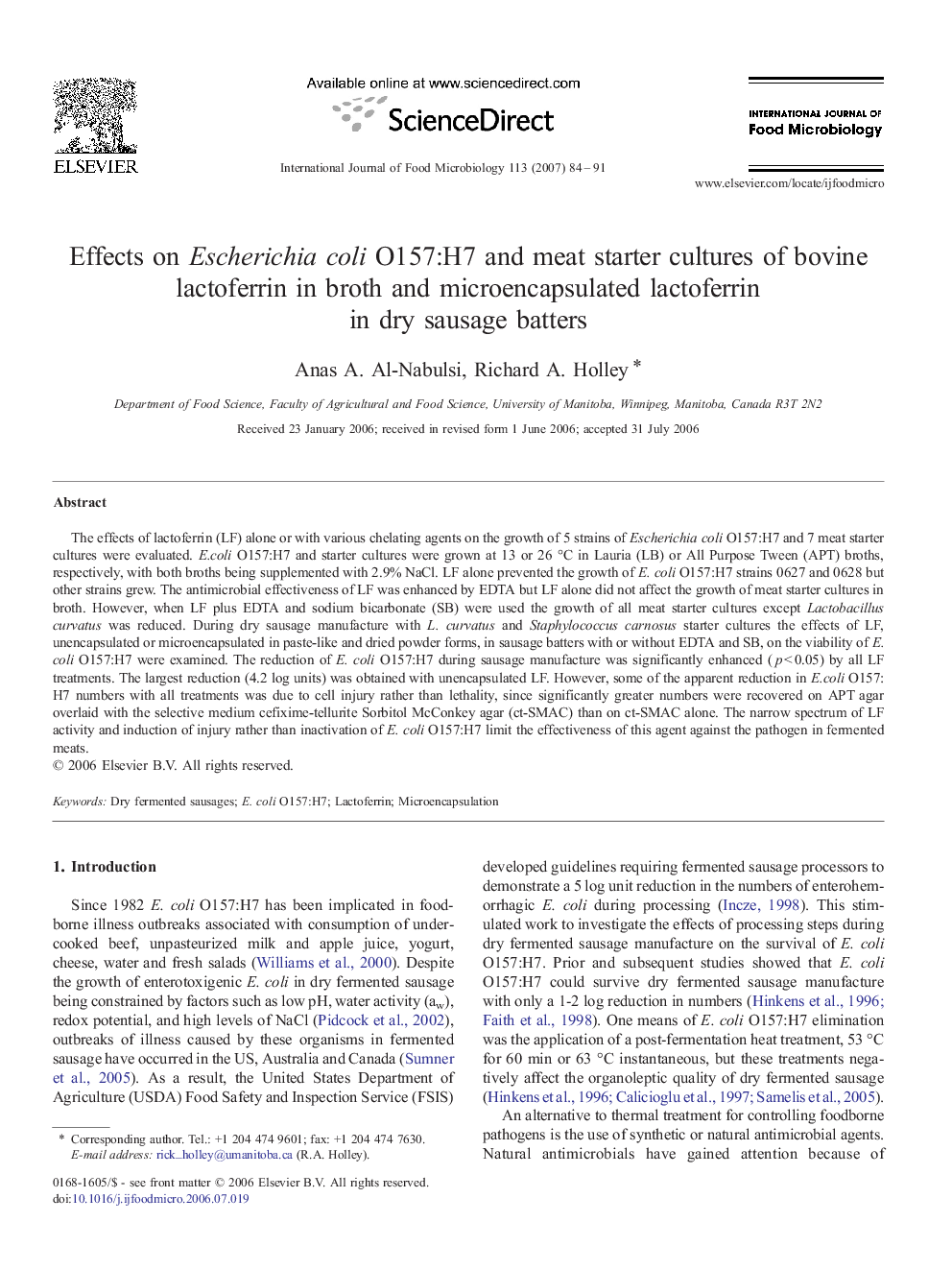| Article ID | Journal | Published Year | Pages | File Type |
|---|---|---|---|---|
| 4370048 | International Journal of Food Microbiology | 2007 | 8 Pages |
The effects of lactoferrin (LF) alone or with various chelating agents on the growth of 5 strains of Escherichia coli O157:H7 and 7 meat starter cultures were evaluated. E.coli O157:H7 and starter cultures were grown at 13 or 26 °C in Lauria (LB) or All Purpose Tween (APT) broths, respectively, with both broths being supplemented with 2.9% NaCl. LF alone prevented the growth of E. coli O157:H7 strains 0627 and 0628 but other strains grew. The antimicrobial effectiveness of LF was enhanced by EDTA but LF alone did not affect the growth of meat starter cultures in broth. However, when LF plus EDTA and sodium bicarbonate (SB) were used the growth of all meat starter cultures except Lactobacillus curvatus was reduced. During dry sausage manufacture with L. curvatus and Staphylococcus carnosus starter cultures the effects of LF, unencapsulated or microencapsulated in paste-like and dried powder forms, in sausage batters with or without EDTA and SB, on the viability of E. coli O157:H7 were examined. The reduction of E. coli O157:H7 during sausage manufacture was significantly enhanced (p < 0.05) by all LF treatments. The largest reduction (4.2 log units) was obtained with unencapsulated LF. However, some of the apparent reduction in E.coli O157:H7 numbers with all treatments was due to cell injury rather than lethality, since significantly greater numbers were recovered on APT agar overlaid with the selective medium cefixime-tellurite Sorbitol McConkey agar (ct-SMAC) than on ct-SMAC alone. The narrow spectrum of LF activity and induction of injury rather than inactivation of E. coli O157:H7 limit the effectiveness of this agent against the pathogen in fermented meats.
